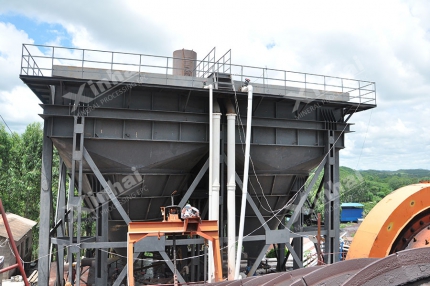In the mining industry, there are many mineral thickener suppliers, and Xinhai is one of the representatives, whose high-efficiency thickener is with the advantages of the foreign device, usage of the new mechanical structure,which enhance the cohesion of the flocculation, and would make the products more competitive in the market.
In the ore processing, the mineral material always needs to be concentrated to meet the standard of high concentration to facilitate the further processing. In general, Thickener is mainly used for the thickening of ore concentrate and the dewatering of tailings. The thickener is composed of two major parts including circular thickening tank and the rake-type mud scraper, the former is used to stock the slurry and the latter one is used to discharge the settled mineral particles. It is much later to import the thickener into China. The first thickener was born in Shenyang Mining Machinery CO., LTD, which made in accordance with a Soviet-style thickener. With about a decade of exploration, a series of thickening products are produced in the mid-1960s., which met the needs of the middle and small-scale dressing plants in domestic basically. This is the history of the development of the thickener.
Thickeners can be classified on the basis of the way of transmission, which includes center transmission thickener and peripheral transmission thickener. The latter one also can be classified into running roller transmission and rack transmission thickener. During the operating, capacity, as the thickening parameter to describe the work efficiency of the thickener. Namely, the material quality is settled in every day, which can be shown like “t/d” The thickener parameter is closely related to the inner diameter, depth, and the surface. The larger the inner diameter is, the wider the particles spread, at the same time, the settling particles increase. So the bigger the inner diameter is, the larger capacity the thickener is. The depth, a new thickener parameter, which shows the maximum distance between the upper supernatant and the bottom. The deeper the depth is, the lower the particles contained in the upper supernatant is.


 marketing@ytxinhai.com
marketing@ytxinhai.com  0086 13810327080
0086 13810327080 






































































































 CHAT
CHAT MESSAGE
MESSAGE

